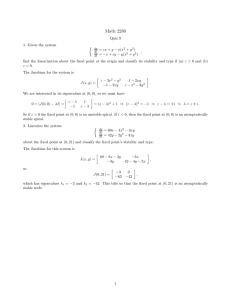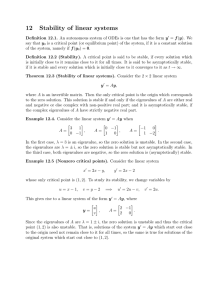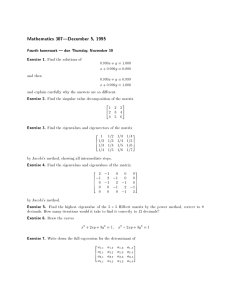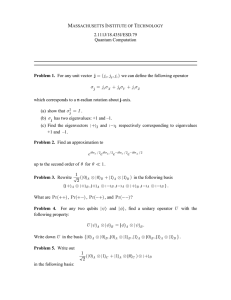Math 215 Spring 2010 Assignment 9
advertisement
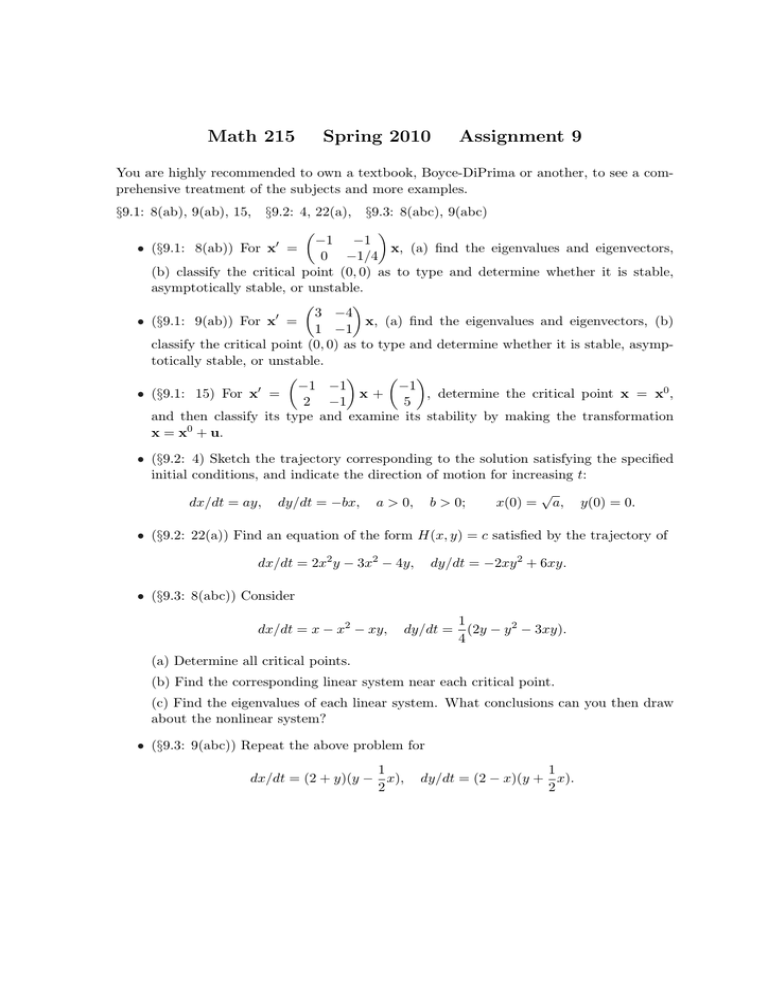
Math 215 Spring 2010 Assignment 9 You are highly recommended to own a textbook, Boyce-DiPrima or another, to see a comprehensive treatment of the subjects and more examples. §9.1: 8(ab), 9(ab), 15, §9.2: 4, 22(a), §9.3: 8(abc), 9(abc) µ ¶ −1 −1 0 • (§9.1: 8(ab)) For x = x, (a) find the eigenvalues and eigenvectors, 0 −1/4 (b) classify the critical point (0, 0) as to type and determine whether it is stable, asymptotically stable, or unstable. µ ¶ 3 −4 • (§9.1: 9(ab)) For x0 = x, (a) find the eigenvalues and eigenvectors, (b) 1 −1 classify the critical point (0, 0) as to type and determine whether it is stable, asymptotically stable, or unstable. µ ¶ µ ¶ −1 −1 −1 0 • (§9.1: 15) For x = x+ , determine the critical point x = x0 , 2 −1 5 and then classify its type and examine its stability by making the transformation x = x0 + u. • (§9.2: 4) Sketch the trajectory corresponding to the solution satisfying the specified initial conditions, and indicate the direction of motion for increasing t: √ dx/dt = ay, dy/dt = −bx, a > 0, b > 0; x(0) = a, y(0) = 0. • (§9.2: 22(a)) Find an equation of the form H(x, y) = c satisfied by the trajectory of dx/dt = 2x2 y − 3x2 − 4y, dy/dt = −2xy 2 + 6xy. • (§9.3: 8(abc)) Consider dx/dt = x − x2 − xy, 1 dy/dt = (2y − y 2 − 3xy). 4 (a) Determine all critical points. (b) Find the corresponding linear system near each critical point. (c) Find the eigenvalues of each linear system. What conclusions can you then draw about the nonlinear system? • (§9.3: 9(abc)) Repeat the above problem for 1 dx/dt = (2 + y)(y − x), 2 1 dy/dt = (2 − x)(y + x). 2

